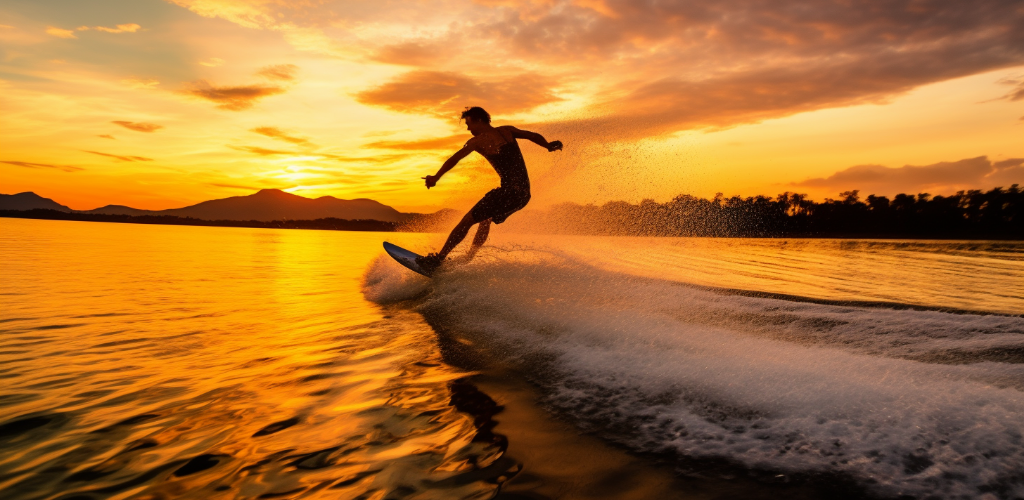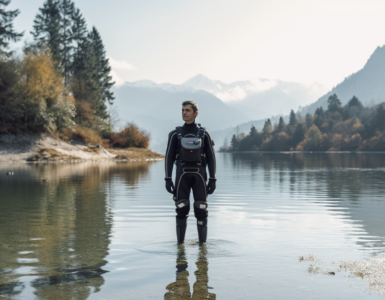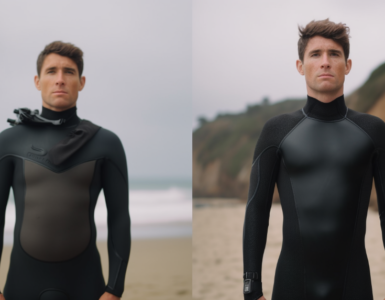Imagine yourself skimming across the surface of the water, the wind in your hair, and the thrill of speed and adventure coursing through your veins. Welcome to the world of wakeboarding! This exhilarating water sport has captured the hearts of many thrill-seekers worldwide, offering a unique blend of surfing, snowboarding, and waterskiing techniques. If you’re a beginner looking to venture into wakeboarding or wanting to improve your existing skills, you’re in the right place. This guide will walk you through everything you need to know about wakeboarding.
Understanding the Basics of Wakeboarding
Wakeboarding is a sport that heavily relies on the principles of gravity, tension, and balance. Much like surfing, it requires you to stand on a board while being towed by a boat, but with the added adrenaline rush of performing jumps and tricks off the boat’s wake. Understanding these principles is the first step to mastering wakeboarding.
The Necessary Gear for Wakeboarding
Before you can hit the waves, you’ll need some essential equipment. This includes a wakeboard, bindings to secure your feet to the board, a life vest for safety, and a boat or a cable system to tow you. Remember, the quality of your gear can significantly impact your performance and safety, so choose wisely.
Safety Precautions in Wakeboarding
Wakeboarding is undoubtedly fun, but it’s also a sport that comes with risks. Ensuring the right fit for your gear, checking water conditions, and always having a spotter to watch out for potential hazards are crucial safety measures. Remember, safety should always be your number one priority.
Getting into Wakeboarding Shape
Wakeboarding demands physical strength, particularly in your core and lower body. Incorporating specific exercises into your workout routine, such as squats, lunges, and core stability exercises, can help you build the necessary strength and improve your wakeboarding performance. So, are you ready to get into wakeboarding shape?
Preparing to Wakeboard
Before you can start slicing through the water like a pro, there are a few things you need to get in place. Let’s start with the most basic – the wakeboard itself.
Choosing the Right Wakeboard
When it comes to wakeboards, one size does not fit all. Your weight, height, and experience level all play a part in determining the type of board that will best suit you. So, how do you make the right choice?
Beginner wakeboards are usually longer with a rounded edge, while more advanced boards are shorter with a sharper edge for better maneuverability. The board’s rocker, or curvature, also matters. A higher rocker gives you more control and softer landings, while a lower rocker provides faster speeds and smooth glides.
Choosing a board that’s too small can make it difficult to stay afloat, while a board that’s too large can hinder your ability to maneuver. Remember, the right wakeboard can enhance your performance and make your experience much more enjoyable.
Learning to Stand on the Board
Now that you’ve picked out your wakeboard, it’s time to get on it. But wait, how do you stand on a wakeboard?
First, your feet should be positioned shoulder-width apart, with your knees slightly bent. Your weight should be evenly distributed between your feet, but leaning slightly more on your back foot. Your body posture should be relaxed, with your arms holding the rope at hip level. Imagine you’re in a squatted position, ready to jump. Got the image? Good, because that’s how you should be standing on your wakeboard.
Getting Up on the Wakeboard
Ready to get up on your wakeboard? Here’s how.
As the boat or cable system starts to pull, resist the urge to stand up immediately. Instead, let your board turn naturally until it’s perpendicular to the rope. Keep your arms straight and allow the pull of the boat to bring you up. Once you feel the board under your feet, slowly rise to a standing position. Remember, patience is key here. Don’t rush it!
Mastering Wakeboarding Skills
Once you’ve got the basics down, it’s time to start honing your wakeboarding skills. Are you ready?
Learning the Basic Wakeboarding Tricks
Wakeboarding isn’t just about riding on water; it’s about performing tricks and stunts that make the ride thrilling. So, where do you start?
Begin with simple tricks like jumps, where you ride over the wake and land on the other side. Then, progress to slides where you slide your board along the surface of the water. And then, there’s the grab – a trick where you grab your board in the air during a jump. Remember, practice makes perfect, so don’t get discouraged if you don’t nail these tricks on your first try.
Improving your Wakeboarding Techniques
Want to become a better wakeboarder? Here are some tips.
Work on your balance. This is crucial in wakeboarding and can be improved with exercises like yoga or Pilates. Also, learn to use the wake to your advantage. It can act as a ramp for tricks or a barrier for sharp turns. Lastly, don’t forget to relax. A tense body can throw off your balance and make you more prone to falls. So, take a deep breath, relax, and enjoy the ride.
Taking Wakeboarding to the Next Level
So, you’ve got the basics down. You can stand on your board, ride the wake, and even pull off a few tricks. But what’s next? How do you take your wakeboarding game to the next level?
Learning advanced wakeboarding techniques is the logical next step. These techniques require a lot of practice, but once you get them down, they can add a whole new level of excitement to your wakeboarding experience. Let’s look at some of them, shall we?
- Inverts: Also known as flips, inverts require you to literally flip your body over while in the air. Sounds challenging, right? But with practice, you’ll be able to pull off this thrilling trick.
- Spins: As the name suggests, this technique involves spinning your body while in the air. You can do a 180, 360, or even a 720 spin, depending on your skill level.
- Raley: This is a superman-style trick where you extend your body flat out while in the air. It’s a crowd-pleaser for sure!
- Tantrum: This is a type of invert where you do a backflip off the wake. It’s a trick that definitely requires some guts!
- Whirlybird: This is a 360 spin combined with an invert. It’s one of the more advanced tricks, but once you nail it, you’ll feel like a true wakeboarding pro.
Remember, these tricks are not for beginners. Make sure you’re comfortable with the basics and have a good understanding of wakeboarding safety before attempting these advanced techniques.
Maintaining Your Wakeboarding Gear
Now that you’re pushing your skills to the limit, it’s more important than ever to make sure your gear is in top-notch condition. After all, your gear is what allows you to enjoy this fantastic sport safely and effectively. So, how do you maintain your wakeboarding equipment?
Firstly, always rinse your gear with fresh water after each use. This is especially important if you’ve been wakeboarding in salt water, as salt can corrode your equipment over time. After rinsing, allow your gear to dry completely before storing it to prevent mold and mildew.
Inspect your gear regularly for any signs of damage. Check the wakeboard for any cracks, dents, or other signs of wear and tear. Pay special attention to the bindings, as these are crucial for your safety. If you notice any damage, it’s best to get it repaired or replace the equipment entirely.
Lastly, consider getting a bag for your wakeboard. Not only will this protect your board from scratches and dents, but it also makes it easier to transport.
Remember, good gear maintenance isn’t just about prolonging the life of your equipment. It’s also about ensuring your safety on the water. So take good care of your gear, and it will take good care of you.
Participating in Wakeboarding Events
So, you’ve learned the basics, honed your skills, and maybe even mastered a few tricks. What’s next? Why not test your skills in a wakeboarding event? Wakeboarding events are not just about competition; they’re a fantastic way to meet other enthusiasts and become part of a larger community. Sounds exciting, doesn’t it?
| Event | Location | Date |
|---|---|---|
| Wake Open | Tampa, Florida | April |
| Moomba Masters | Melbourne, Australia | March |
| Wakestock | Toronto, Canada | July |
| US National Championships | Various Locations in the US | August |
| World Wake Association World Championships | Various Global Locations | October |
Becoming Part of the Wakeboarding Community
Beyond the thrill of riding the waves, wakeboarding is all about community. And to truly immerse yourself in this awesome sport, you should consider engaging with the wakeboarding community. But where do you start?
Joining a local wakeboarding club is a great start. It provides an opportunity to meet like-minded individuals, share experiences, and learn from each other. Participating in events, as we discussed earlier, is also an excellent way to get involved.
Don’t forget about the online world, too. Follow popular wakeboarders on social media, join online forums, and subscribe to wakeboarding channels on YouTube. You’ll be amazed by the wealth of knowledge and inspiration you can find in these spaces.
Conclusion
And there you have it! A comprehensive guide to wakeboarding – from understanding the basics to participating in global events. Now it’s time for you to take the plunge. Remember, everyone starts somewhere, and every expert was once a beginner. So, why not you?
Have you tried wakeboarding? What was your experience like? Do you have any tips for beginners, or perhaps a funny story to share? We would love to hear from you. So, go ahead, share your experiences in the comments section below. Let’s continue this conversation and grow this amazing community together!




